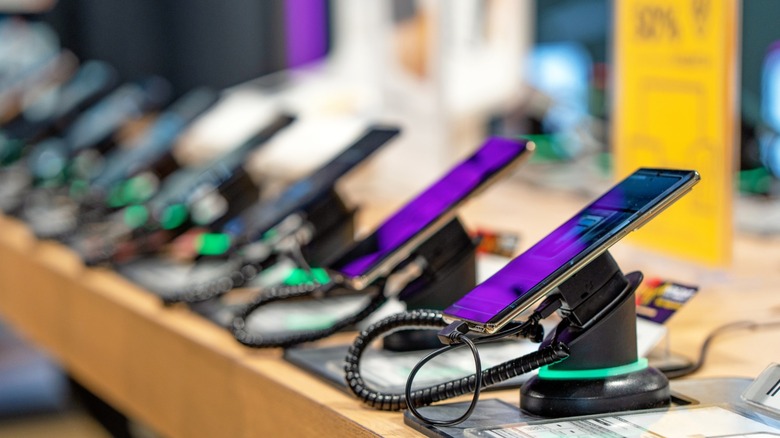How To Tell If Your Android Phone Is Refurbished
If you're getting a new phone, you'll need to do some due diligence. Sometimes, what looks like a brand-new phone is actually a refurbished one. There's nothing wrong with refurbished devices. You just need to know the difference between a certified refurbished phone and one that's simply been repaired or "renewed" by anyone with the tools and a tutorial. You also don't want to get a refurbished phone if you're paying full price for what you believe is a new one.
A certified refurbished phone is usually restored to 'like-new condition' by the manufacturer or an authorized service center using Original Equipment Manufacturer (OEM) parts. It goes through performance testing and usually comes with a warranty, making it nearly as reliable as new. But with an unofficially refurbished phone, there is no guarantee the device was restored by the manufacturer or someone authorized to do so. It could have been done by anyone with parts from eBay and a YouTube tutorial. So your device could look alright on the outside, but if generic parts were used or shortcuts were taken, there could be trouble lurking beneath the surface.
Key checks for spotting a refurbished Android phone
The easiest way to find out if your Android phone is new or refurbished is by checking its IMEI number. Open your phone app and dial *#06#, then your IMEI should instantly appear on the screen. Take note of the number, then go to your Settings, and tap 'About Phone' to find the IMEI listed there as well. If the two numbers don't match, it's a sign that the device has been tampered with.
You can also compare the IMEI on your phone with the one printed on the box your device came in. If the two numbers don't match, it means your phone is likely refurbished, or at least not brand new. While you're at it, take a look at your device's battery health. If it's below 100%, that means your phone has probably been used before. Although most premium refurbishers will replace the battery when the one in the device has been significantly depleted, it's still a good idea to check.
Beyond these software checks, you can inspect your phone's physical condition. A lot of modern refurbishers are getting better at disguising repairs, but there are still some subtle signs that give them away. You should look out for faint scratches on the body or small dents, which may have come from a previous owner. Also, try to check for any screen discoloration or pixelation that could have been caused by a replacement using non-original parts.
Why you shouldn't buy a refurbished phone (sometimes)
As mentioned earlier, a refurbished phone can be a smart purchase, but that's only when you're sure who refurbished it and the process it went through. Third-party refurbishment isn't a regulated process, so different sellers follow different standards, and some follow none at all. A phone tagged 'refurbished' could mean it was professionally restored, or it could simply be a device someone wiped, cleaned, and repackaged.
If you go with an unofficially restored phone, you can't guarantee that the phone was thoroughly tested, repaired correctly, or even inspected by someone qualified. That's where things could go wrong. Fake or mismatched parts can wreak havoc on your device. They can drain your battery faster, make your phone overheat, or cause software glitches that slow it down over time.
Private sellers or unverified shops also may not be upfront about the device's true history. You could end up with a phone that's been heavily used, water-damaged, or previously repaired multiple times, and you would have no idea. Remember that phones refurbished unofficially probably won't be covered by the manufacturer, so you would have to pay for any repairs yourself. For peace of mind, make sure you get a certified refurbished phone with OEM parts and a warranty.


